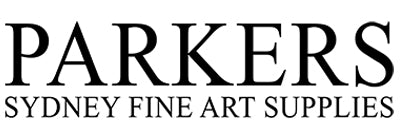Making Brushes with Da Vinci
Until the end of the 17th century, each artist had to make their own painting tools. The desire to continue the creative process with the least possible interruption made it essential for artists to also be excellent brush makers. The better the brush maker, the better the artist could evenly distribute colours.
During the 18th century, an ambitious crafts guild started to master the art of brush binding, relieving the artist of this burden. As this guild increased their expertise through experience and experimentation, the young trade was soon booming in the commercial town of Nuremberg. The city soon gained a worldwide reputation for brush making. Self-conscious brush-makers went to work in a frock coat and bowler hat until the beginning of the 19th century, to visibly reinforce their respected position.

The many outstanding features of a handmade brush with top quality raw materials are often taken for granted by painters with exacting requirements. Properly made, a natural hair brush should have excellent colour holding capacity, a lively elasticity and should quickly regain the original shape the brush maker formed when new paint is absorbed. All the features result in a highly precise, elastic instrument. Considering the ancients were using wooden branches bound with hair, one can see the advantages for the modern artist.
Everything begins with the end: the animal tail. At the tip, the hairs are particularly strong. By selecting only the finest quality hair, the brush can be used delicately or aggressively and give the artist optimum results whether they are a realist painter or an abstractionist. Selecting the right hair is of the utmost importance for this flexibility.

In the sun filled rooms of our production masters, interns and apprentices sit at their marble working tables learning the skills of brush making. Visitors to the da Vinci facility often express surprise at the calm atmosphere not usually found in a "factory." They often compare it to a laboratory or studio, as the silence of concentration prevails, interrupted only by occasional consultation and conversation. Also heard is a rhythmic tapping somewhere between Dixieland jazz and marching music.
The origin of this tapping comes from a small brass case which the brush maker fills with hair or bristle needed for the requested brush. The brass case is then drummed on the marble table until each hair settles to the bottom. After having retrieved the right amount of hair from the brass case, the hair will be put into a cotton spring loop that is spun between the fingers. Soon the hair is bloomed into the correct shape at this stage. The brush maker quickly fixes this shape by turning the thread again while holding the other end of the thread tightly with his teeth.

At our factory the brush-maker needs only a knife and a pair of scissors. The pair of scissors to cut through the string, the knife to remove from time to time hairs or bristles which are blunt or lying backwards. However, a brush-maker would NEVER even dream of shaping an artist brush with the knife.
“…The hand-made shape has always been and will always be the most vital quality feature of a good artist brush…”. At da Vinci, this is our pledge.

The gluing of the brush hairs into the ferrule is done by a dosing machine. The ferrule is filled with a modern component-glue. After the drying process, all the hairs are firmly positioned. Then there are other machines doing their work: Handles and ferrules are pressed together, sizes and company names stamped onto the handles.
At da Vinci, we have built our own machines to make sure these processes are done to our exact specifications.
Last but not least, each brush is carefully checked to see if the finishing of the brush-head is impeccable and the ferrule is firmly attached to the handle. Carefully packaged, it may then start its travel, perhaps over mountains and oceans, to one of our loyal customers making art in the wide, wide world.
VIEW THIS GREAT VIDEO ON PRODUCTION AT THE DAVINCI FACTORY
Next, the hair bundle will be placed in the ferrule, which must be filled snugly. This is a crucial step. The hair quantity for 100 brushes is then weighed on a special gold scale. The brush maker, with experienced and nimble hands, selects one hundredth of the overall quantity. This step becomes even more amazing when considering that for Kolinsky Red Sable the various quantities grasped range from 0.010 grams for size 10/0, 1.11 grams for size 12 and 4.12 grams for size 24.
When you are aware of the many sizes and shapes and the diverse textures and characteristics of the different hairs, the whole extent of a master brush-maker's skillfulness is evident. Many precise, decisive pinches for each hair quantity cannot be imitated

